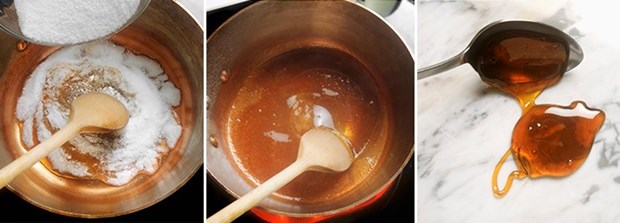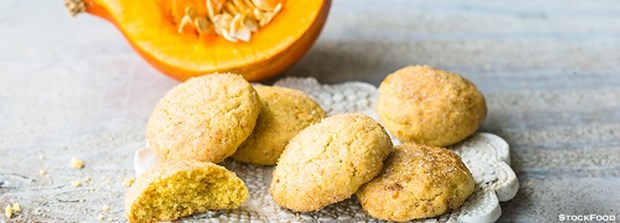What's the science of melting sugar and how do these chemical reactions give sweets and biscuits a softer consistency?
Sweet
flavours are inevitably associated with sugar. In scientific terms, sugar is
one or more molecules made up of carbon, hydrogen and oxygen. These may be
single molecules, as in the case of glucose or fructose, or combinations of
molecules: sucrose, for instance, consists of a glucose molecule and a fructose
molecule bonded together. I have a particular reason for referring to sucrose:
common table sugar, the sort normally used in cake and pastry making, is in
fact sucrose.
There
are many reasons why this kind of sugar has become so popular in cooking and
baking. First of all, it is widely available: sucrose, or common “sugar”, is
extracted from sugar cane and beet, which are easy to grow almost anywhere in
the world. Not surprisingly, its annual production amounts to 70 million tons.
Melting sugar:
Chemical reactions
Sucrose
is highly soluble: as much as 2000 grams of sucrose can be dissolved in one
litre of water! However, it is mainly due to the way it reacts that it has
become the protagonist of our sweetest recipes.
The
chemical reaction we are most familiar with is that of melting: sugar
decomposes at a temperature ranging between 184 and 186°C. This is a very
recent discovery we owe to a team of researchers in Illinois. Basically, when
we heat sucrose gently, this produces a phenomenon known as “apparent melting”.
In other words, sugar crystals do not actually melt but produce a proper
reaction called “inversion”. What really happens is that the two molecular
components of sugar – glucose and fructose – decompose. In their turn, they
give way to “caramelisation”, consisting of two phases.

Melting sugar
In
the first phase, the structure of sugar changes as the heat increases. We can
easily observe this for ourselves when we see sugar starting to “melt”. At this
point, the second phase kicks in: the additional increase in heat causes the
elimination of the water molecule. This produces a reaction called
“beta-elimination” which leads to the formation of hydroxymethylfurfural. The
substance darkens in colour and tastes more and more of caramel. If too much
heat is applied, nothing but carbon will remain, which means that our caramel
is well and truly burnt!
In
brief, that of heating sucrose may appear to be a banal operation but it can
offer us a series of interesting reactions. In particular, “inversion”, which
benefits from an acid pH, gives us “invert” sugars that are very hygroscopic:
this means they are able to absorb a high number of water molecules, which
makes them ideal for preparing soft sweets and desserts or, indeed, for any
recipe we wish to keep moist even when it has to be exposed to the air.
A tip for making soft
sweets and biscuits
We
can apply this principle to ordinary sugar to give our sweets a more or less
soft consistency, biscuits in particular.

Pumpkin biscuits
First
of all, we need some invert sugar which can even be home made using 200 grams
of sucrose, the juice of one large lemon and 140 grams of water. Place all
three ingredients in a small saucepan and slowly bring them to the boil over a
low heat, stirring constantly with a wooden spoon. Now, let the mixture simmer
for at least half an hour, stirring as little as possible. Finally, leave it to
cool and transfer the syrup to a jar, for use when needed.
You
can use it to prepare pumpkin biscuits for example. Grate 100 grams of pumpkin
and add it to 250 grams of flour, 1 egg, 50 grams of invert sugar, two
spoonfuls of sour cream and 30 grams of butter. Mix all the ingredients
thoroughly, roll out the mixture and use a biscuit cutter to obtain the shape
you require before arranging your biscuits on an oven tray. Bake for around 25
minutes in an oven preheated to 160°C. These delicious biscuits will always be
soft and moist thanks to the secrets of sugar!
By FDL